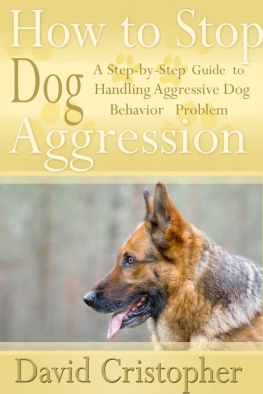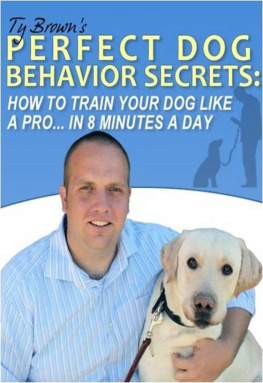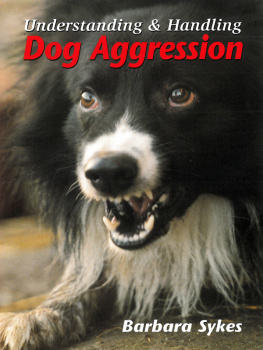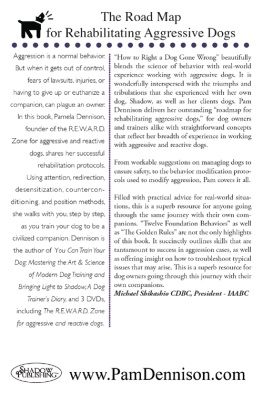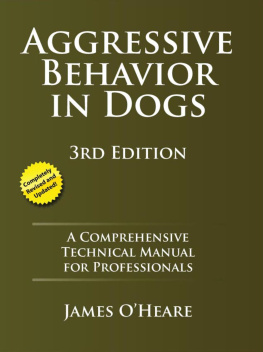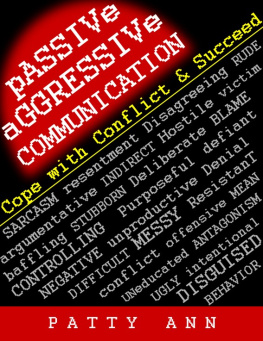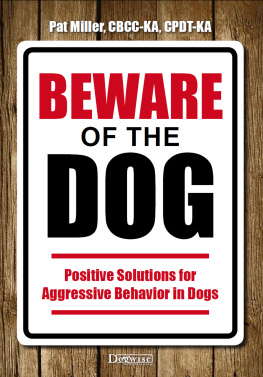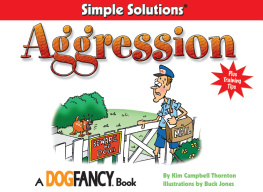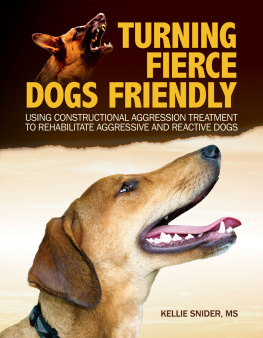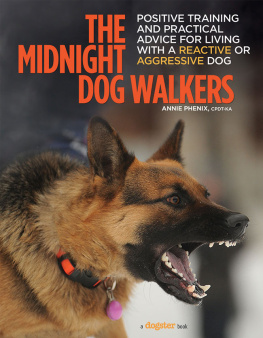How to Stop Dog Aggression: A Step-By-Step Guide toHandling Aggressive Dog Behavior Problem
By: David Christopher
Copyright 2012 by David Christopher
Smashwords Edition, License Notes
This ebook is licensed for your personal enjoymentonly. This ebook may not be re-sold or given away to other people.If you would like to share this book with another person, pleasepurchase an additional copy for each recipient. If youre readingthis book and did not purchase it, or it was not purchased for youruse only, then please return to Smashwords.com and purchase yourown copy. Thank you for respecting the hard work of thisauthor.
Introduction
Worst-case scenario for dog owners is that your dogwill harm another dog or harm a person. Even a normally calm dogcan be aggressive if they feel afraid or threatened.
As a dog owner, you are responsible for all that yourdog does, you will be responsible for taking care of theconsequences of his actions if he causes harm.
Sometimes, if your dog is normally calm dog, thebeginning signs of aggressiveness are ignored.
The owner might think it is just a fluke or that itwill not happen again.
Any sign of aggressive behavior is a cause of concernand should be addressed immediately.
If you ignore the first sign of aggressive behavior,it can only continue to get worse, until either it is out ofcontrol, or somebody gets hurt.
Many pet owners who do have a dog that shows signs ofaggression just think that by keeping the dog away from otherpeople and pets that it is okay.
They feel that their dog will not turn thataggressive behavior towards them. The fact is that an aggressivedog can turn on its owner, just another reason to curb aggressivebehavior before it becomes a problem.
If left unchecked, it could result in you beingfearful of your own dog.
No dog owner should ever be fearful about his or herown pet and if the behavior is corrected early on, that stage willnot happen.
For your sake, and for the sake of those around,start working to correct aggressive behavior when it manifests, donot wait until it has become a problem.
Nearly all aggression is due to an underlying causeand when you know the cause, you can treat the aggression.
If your dog is showing signs of aggression, you needto be a responsible owner and take steps right away.
Until you have corrected the aggressive behavior,even if it is just occasional behavior, you should keep your dogaway from people and other pets just to be safe. You can never betoo cautious when dealing with an aggressive dog.
If you are having just the beginnings of aggressivebehavior being shown by your dog, consider training your dog inbasic obedience commands.
A trained dog is a dog that is easier to control, andwhen a dog reacts to your commands, it means that they recognizeyou as their pack master and you have their respect.
A well-timed command can put an end to the beginningof aggressive behavior and a trained dog is a confident dog.
If your dog is aggressive out of insecurity, trainingis a great way to manage it.
Always work with your dog calmly. If you become loudor move suddenly towards your dog, your dog will consider thataggressive behavior and will react with even more aggression.
Your dog picks up on your signals, so if you areagitated, they will be agitated as well, always remain calm.
Do You Have an Aggressive Dog?
Since you have picked up this book, you probablyeither know or suspect that your dog might be aggressive.
However, since dogs can play rough, is your dogreally being aggressive or is the dog just burning off extraenergy?
Dogs are pack animals and like all pack animals,there is an alpha dog, the pack leader. If you let the dog feellike he is the pack leader, it can lead to aggressive behaviorbecause the dog will feel that what he says goes.
Even an occasional sign of aggression is not to betreated lightly because left untended to; it can become a bigproblem.
Fixing your dogs aggression now is the best way tohandle it.
Our methods will help if your dog is alreadyaggressive or just starting to show signs.
Dog aggression is not going to be a fast fix, youwill need to invest time, energy, and patience into curingaggression, but this is your dog, your companion and he is yourresponsibility.
We applaud you for wanting to help your dog insteadof giving up on him.
By working with him, you can cure the aggression, getyour loving companion back, and not have to worry about anypossible problems.
Never be aggressive with your dog, no yelling orphysical punishment. Moreover, if you have a dog with aggressivetendencies then do not encourage play-aggression.
Here are some of the behaviors that an aggressive dogwill exhibit:
Curled lips or baring their teeth
Growling
Snarling
Snapping at people or other dogs
Lunging at people or other dogs
Biting even lightly biting where the skin is notbroken is still an act of aggression
Barking excessively
Blocking the way of somebody or another dog
If your dogs behavior causes you to worry or feelanxious, then you are likely dealing with an aggressive dog.
You should not fear your own dog, and if you do, yourdog will sense that and use it to his advantage.
Remember, you should be the pack leader, not your dogand your dog will sense your fear and use it to establish himselfas the dominate dog in the household.
Training for aggressive dogs will help establish orre-establish that you are the alpha dog, the pack master and thedominate one in the house.
You deserve the peace of mind that your pet will notcause harm and we will give that back to you.
If you have a dog that growls excessively, perhapswhen you play with them or even during dinnertime they willgrowl.
That is aggressive dog behavior and should not beencouraged. Sure, it is cute when you are play fighting with yourpuppy and they give their little growls but that just teaches themthat growling is okay, and it is not so cute when an adult dog doesit.
With training, you can teach your dog that growlingwhen unnecessary or growling excessively is not allowed and that itwill not be allowed to get away with it.
Biting is an outright act of aggression. A dog canbite out of fear, if you reach towards a dog who is exhibitingsigns of fear; you are likely to get bit.
Biting, even lightly is not to be tolerated andtraining to stop biting should begin immediately.
A dog that bites once is very likely to bite again,but you do not have to give up your dog!
Training will usually help cure your dog of theirbiting habit.
Some triggers for aggressive behavior:
Somebody walks by the dog while the dog is eating oranother animal gets too close to the food bowl
Trying to retrieve food that was dropped on thefloor
Trying to retrieve food that a dog has taken from thetable, plate or counter
Attempting to get a dog to stop taking trash from thetrash can
When somebody enters the room the dog is in
Walking too close to the dogs bed
Trying to pull a fearful dog out from under a bed orfrom a closet
Handling the dog
Somebody roughhouses with the dog
The dog is being teased by somebody
Pulling the dogs tail or their ears
Attempting to retrieve something that the dog hasthat it shouldnt (a shoe or slipper perhaps)
If somebody takes one of the dogs toys, or anotheranimal takes one of the dogs toys
Somebody approaches the front door that the dog doesnot know
Follows or chases strangers that are in the yard,such as delivery people or mailman
Snapping or lunging at people in the yard orhouse
Next page
